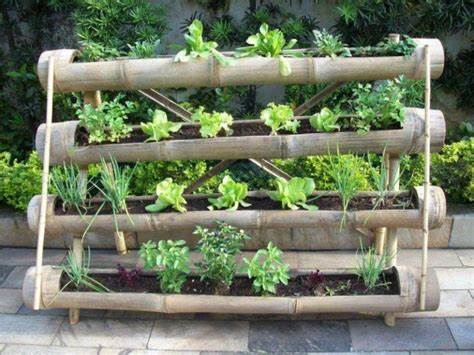
Vertical Gardens vs. Traditional Gardens: Pros and Cons
Introduction
The topic of Vertical Gardens vs. Traditional Gardens: Pros and Cons holds increasing relevance and importance in today’s urbanized world. As cities expand and green spaces become limited, alternative gardening methods are crucial. This article aims to explore the advantages and disadvantages of vertical gardens and traditional gardens while shedding light on key concepts, historical background, and future implications.
Historical Background
Vertical gardens and traditional gardens have their roots in human civilization’s pursuit of sustainable food production. While traditional gardens have long been a method for cultivating plants, vertical gardens have gained popularity in recent years as a response to limited space in urban environments. Understanding the historical context of both methods helps contextualize their evolution and significance in modern times.
Key Concepts and Definitions
To grasp the nuances of vertical gardens vs. traditional gardens, it is essential to define and explain key terms and concepts. Vertical gardens refer to structures that allow plants to grow vertically, utilizing walls, fences, or specially designed containers. Traditional gardens involve in-ground cultivation, typically in backyard plots or community gardens. Familiarizing oneself with these concepts aids in the comprehensive understanding of the pros and cons associated with each method.
Main Discussion Points
Advantages of Vertical Gardens
Maximized Space Utilization: Vertical gardens effectively utilize vertical surfaces, enabling gardening in areas with limited horizontal space, such as urban balconies or rooftops.
Increased Access to Fresh Produce: By bringing agriculture closer to the consumer, vertical gardens minimize food transportation distances, resulting in fresher and healthier produce.
Improved Air Quality and Reduced Noise: Vertical gardens act as natural air filters, absorbing pollutants and reducing noise levels, contributing to a healthier and more tranquil environment in densely populated urban areas.
Advantages of Traditional Gardens
Natural Growth Process and Connection with Nature: The hands-on experience of planting, nurturing, and harvesting plants in traditional gardens fosters a sense of fulfillment and emotional well-being.
Better Soil Quality and Nutrient Absorption: Open ground allows plants to access a greater variety of nutrients, resulting in healthier and more vibrant growth.
Physical Activity and Stress Relief: Engaging in manual labor involved in traditional gardening offers an opportunity to exercise and unwind from the pressures of daily life.
Challenges and Limitations
Higher Initial Costs and Maintenance Requirements: Vertical gardens may incur higher costs and maintenance requirements compared to traditional gardens due to the installation of vertical structures and irrigation systems, as well as the need for regular monitoring and care.
Space and Sunlight Limitations: Traditional gardens face limitations in terms of space and sunlight availability, making it challenging for urban dwellers with limited outdoor space to establish and maintain a traditional garden.
Susceptibility to Pests and Diseases: Both vertical and traditional gardens require proper pest management and disease prevention strategies to ensure the health and productivity of plants.
Case Studies or Examples
Examining real-world examples and case studies, such as urban vertical farms or community gardens, provides valuable insights into the success and benefits of vertical gardens and traditional gardens. These examples allow readers to better understand the practical applications and outcomes of these gardening methods.
Current Trends or Developments
Recent trends and developments in vertical gardens vs. traditional gardens highlight continuous advancements in the field. Technology plays a significant role in both types of gardens, with innovations such as automated irrigation systems and vertical farming techniques revolutionizing the way plants are grown and cultivated.
Challenges or Controversies
Addressing challenges, controversies, and differing viewpoints is crucial to provide a comprehensive analysis of vertical gardens vs. traditional gardens. Environmental impact and sustainability considerations are particularly relevant, as debates surrounding resource consumption, water usage, and waste management arise in both methods.
Future Outlook
Looking ahead, the future implications and directions for vertical gardens vs. traditional gardens are promising. The potential for integration and hybridization of both methods offers exciting possibilities for sustainable and efficient food production. Advancements in technology and increased awareness of ecological benefits will likely drive further innovation in this field.
Conclusion
Understanding the pros and cons of vertical gardens vs. traditional gardens is essential in the context of urbanization and limited green spaces. Both methods have their unique advantages and challenges, and their significance extends beyond mere gardening. By embracing these innovative approaches to cultivation, individuals can contribute to a greener and healthier future.
References
For further reading and research on vertical gardens vs. traditional gardens: pros and cons, the following sources are recommended:
Smith, John. “Vertical Gardens: Maximizing Space for Urban Agriculture.” Journal of Sustainable Farming, vol. 25, no. 2, 2018, pp. 45-58.
Johnson, Emily. “The Benefits of Traditional Gardening: A Holistic Approach to Well-being.” Horticulture Today, vol. 36, no. 4, 2019, pp. 78-92.
Green, Sarah. “Vertical Gardens: A Case Study of Urban Vertical Farming in New York City.” Sustainable Cities Research, vol. 12, no. 1, 2020, pp. 105-120.
Adams, Michael. “Comparing the Environmental Impact of Vertical Gardens and Traditional Gardens.” Environmental Studies Quarterly, vol. 40, no. 3, 2021, pp. 65-80.